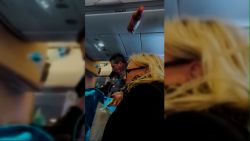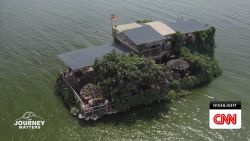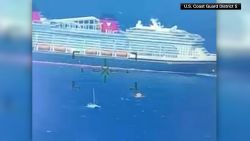Story highlights
NASA awards $20 million supersonic passenger jet contract to Lockheed Martin
Half-scale experimental piloted plane could begin flying as soon as 2020
The age of supersonic jet travel may be a tiny bit closer to making a comeback.
NASA announced Monday it has awarded a $20 million contract to Lockheed Martin to develop a preliminary design for a quiet demonstration passenger aircraft designed to fly faster than the speed of sound.
The piloted test aircraft would use so-called Quiet Supersonic Technology, or QueSST, to create a supersonic “heartbeat,” a kind of soft thump instead of the annoying sonic booms usually associated with supersonic planes.
The project is the first in a series of NASA “X-planes” as part of its New Aviation Horizons initiative.
The planes are aimed at making “flight greener, safer and quieter – all while developing aircraft that travel faster, and building an aviation system that operates more efficiently,” said NASA Administrator Charles Bolden during the official announcement Monday at Ronald Reagan Washington National Airport in Arlington, Virginia.
Sonic booms come from shock waves created as supersonic planes cut through the air. The waves cause sudden air pressure changes, which trigger booming sounds that can be heard for miles.
Last January, sonic booms from new U.S. Navy F-35C fighter jets being tested offshore rattled residents along the U.S. East Coast. Reaction to the booms lit up Twitter, Facebook and other social media.
NASA is calling its quieter sonic boom design “low boom” technology. The agency has been working with engineers from Lockheed’s legendary Skunk Works aviation facility in Palmdale, California, birthplace of iconic aircraft designs such as the U.S. Air Force SR-71 Blackbird surveillance plane and the F-117 Nighthawk stealth attack aircraft. Together NASA and Lockheed have been learning how to “tune” or “shape” a plane’s sonic boom “signature” through its design.
Related story: SR-71: The fastest jet in the world
“We’re confident that our low boom flight demonstration technology solution meets mission requirements,” said a statement Monday from Rob Weiss, Skunk Works general manager and executive vice president.
The fantasy world of future planes
Some of NASA’s low boom design concepts include aircraft with sleek fuselages, needle noses, delta-shaped wings or wings that are highly swept.
Supersonic commercial passenger airline travel ended when the British Airways and Air France Concordes stopped flying in 2003. The planes had struggled to make profits in the wake of a crash in Paris in 2000 that killed 113 people. The planes used a lot of fuel, required special parts and were high maintenance. The noise from the Concordes created an entire set of restrictions anywhere it flew, except over the ocean.
But the sense of status, enthusiasm and romance surrounding supersonic airline travel has never stopped. It seems like every month there is another supersonic airplane design. Last year, a group called “Club Concorde” said it was raising money in hopes of getting a decommissioned Concorde back in the skies.
Supersonic flight obviously would shorten travel time for countless routes around the world.
Depending on funding, NASA said it expects the design and build phase for this half-scale first version of the aircraft to last several years, with the flight campaign starting around 2020, the agency said.
When it’s finished, the single-engine demonstrator aircraft will be used as a valuable tool to gather data to develop future supersonic airliners, Lockheed Martin’s chief engineer for QueSST Mike Buonanno told CNN.
To cut costs, the plane will be built using off-the-shelf parts from existing aircraft when possible, including landing gear from F-16 fighter jets, he said. The cockpit likely will be set about 40 feet behind the nose of the aircraft, and pilots likely will use a synthetic generated vision system for takeoffs and landings.
How close will the QueSST X-plane be to an airliner that aircraft makers might actually develop?
“A full-scale vehicle would not be a scale up of this product,” Buonanno said.
“The shaping guidelines that we follow and the tools would be the same, but it may have a different number of engines or other features that may be different for a commercial product.”
In other words, even after this X-plane starts breaking ground with new supersonic aerospace design, it sounds like there will be a lot more design work to do before the world’s air travelers will be able to routinely break the sound barrier aboard commercial airliners.

























